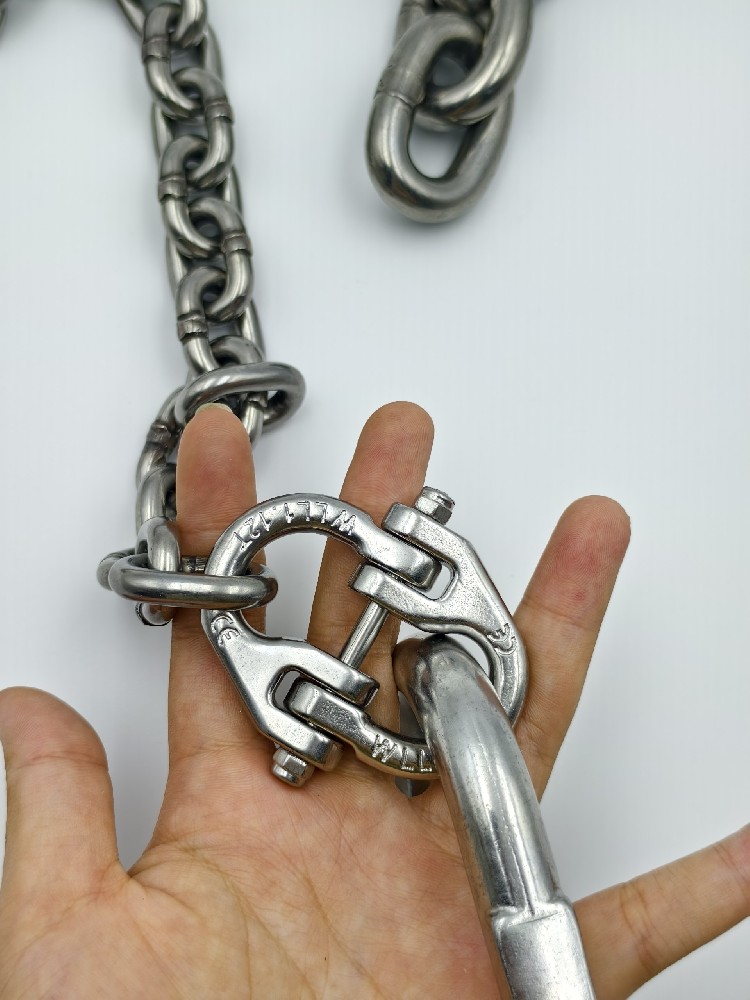Our staff will contact you within 12 hours, You can also contact us through the following ways:
Contact US WhatsApp: +8618766656705
- Email: [email protected]
- Tel: +8618766656705
- Web: https://www.toponechain.com/
You can buy chain almost anywhere—including big-box stores—yet safe overhead lifting demands more than convenience. Before you trust harbor freight chains for rigging, you must read the stamp, confirm the chain load rating, and match the hardware from a clear list of types of shackles. This guide shows what the standards require, how to decode labels, which shackles fit which jobs, and how to verify capacity at the beam—so your lift plan stays clean and your audit trail stays tight.
Retail shelves often carry transport chains (e.g., G30, G43, G70) for binding cargo, and those products usually do not qualify for overhead lifting. Read the packaging and the link stamp:
Look for G80 or G100 marks and a stated Working Load Limit (WLL) “for overhead lifting.”
Confirm a manufacturer ID and a heat/batch number for traceability.
Avoid unlabeled or “general purpose” chain for cranes; transport ratings differ from lifting ratings.
When in doubt, ask the counter for the product’s conformity statement to ASME B30.9/16 or EN 818-4/13157 and a proof-test certificate tied to the batch.
If the chain lacks those items, use it for tie-down, not lifting.
Every safe rig uses three numbers:
WLL (Working Load Limit): the maximum service load.
Proof Load: the non-destructive test load the maker applies to every sling/hoist chain—refer to the governing standard (commonly 2 × WLL in ASME, 2.5 × WLL in EN).
Minimum Breaking Force (MBF): the certified failure load. For alloy sling chain families (e.g., EN 818-2 Grade 8, many ASME-listed alloy chains), MBF ≥ 4 × WLL by design.
Always check the product’s actual certificate; do not assume values across brands.

Shackles link the chain to the load point. Choose by load path and inspection needs:
Shackle Type | Best Use | Why It Works |
Bow (anchor) shackle | Multi-leg slings, changing angles | Wide crown tolerates side-to-side leg spread |
D (chain) shackle | Straight, in-line pulls | Narrow profile controls side load |
Screw-pin | Rapid rig-and-derig | Tool-free, quick inspections |
Bolt-type with nut & cotter | Long-term, vibration zones | Cotter prevents rotation; holds alignment |
Kenter (joining) shackle | Anchor/drag chains at sea | Purpose-built coupler for studlink lines |
Follow component standards (e.g., ASME B30.26, EN 13889) and match each shackle’s WLL to the chain leg WLL at the actual leg angle.
You size the system, not just the shackle:
Grade compatibility: keep chain and fittings at the same grade family (e.g., G80 chain with Grade-rated hooks/shackles). Mixed grades drive the assembly down to the lowest component.
Fit: shackle pin diameter must fit the link without point loading; the bow ID must clear the master link or connector freely.
Orientation: run the pin through the hardware; run the bow toward the sling leg(s). That layout reduces bending on the pin.
Markings: verify WLL, size, maker mark, and required trace codes on the shackle crown.
Chain Ø (mm) | G80 WLL (t) | G100 WLL (t) | Notes |
6 | 1.12 | 1.4 | Common on small hoists |
8 | 2.00 | 2.5 | Popular for 1–2 t slings |
10 | 3.20 | 4.0 | General rigging workhorse |
13 | 5.30 | 6.7 | Heavy shop picks |
16 | 8.00 | 10.0 | Large modules and skids |
Numbers reflect widely used rating tables for alloy sling chains; always confirm the exact chart for your brand and standard.
Read the stamp on several links—look for G80/G100, size, maker ID.
Check the tag on pre-assembled slings—WLL by hitch (vertical/choker/basket), angle table, serial number, and latest proof-test date.
Measure geometry: hook throat ≥ 4 × chain Ø; master-link inside width ≥ 5 × chain Ø; crane hook latch must close.
Inspect condition: no twist, no nicks, no pits; crown wear ≤ 10 %; elongation ≤ 3 % over five links.
Document in your rigging log with batch numbers and inspection results.
Read the label: if the product says “transport” or lists G30/G43/G70 only, keep it off the hook and use it for tie-down.
Look for lifting language: packaging or datasheet should cite overhead lifting and a recognized standard.
Ask for certificates: insist on a proof-test or conformity document tied to the batch.
Upgrade fittings: if you only have lifting-rated chain, but not shackles or hooks, purchase rated hardware before any lift.
You can source lifting-rated chain at a big-box store if the product meets these checks; if not, choose an industrial supplier.
A close-up of the chain stamp showing grade and maker.
The shackle crown with WLL and standard mark.
The sling tag with hitch and angle table.
The full rig on the beam with legs measured at 60°.
These images strengthen your audit trail and help crews brief new members.
Problem | Likely Cause | Fix |
Latch will not close | Bent latch or fouled spring | Replace latch kit; clean pivot |
Chain jumps in wheel | Worn pocket seats or elongated links | Replace wheel and chain together |
Uneven leg tension | Different leg lengths or bad angle | Re-set pick points; use spreader |
Pin keeps backing out | Wrong shackle type for vibration | Switch to bolt-type with cotter |
Read the stamp, confirm the chain load rating, choose the right types of shackles, and demand documents before you lift with harbor freight chains or any retail chain—contact TOPONE CHAIN today for certified G80/G100 chains, matched shackles, and documented test reports.